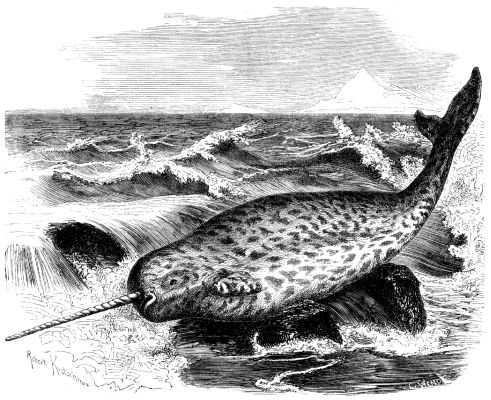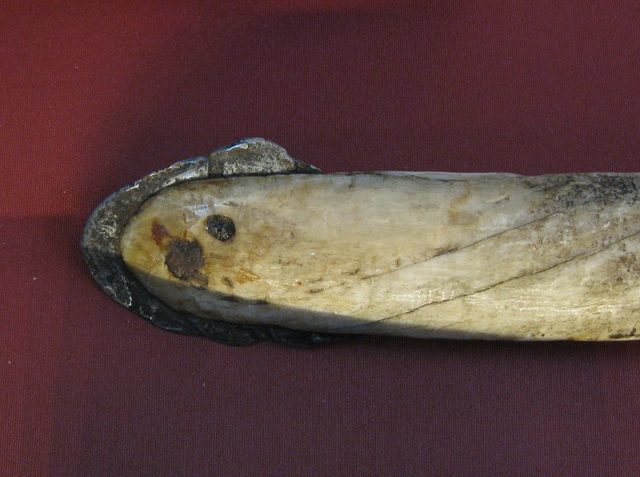The Vikings had a reputation for being bloodthirsty and violent people that lived to raid, rape, and pillage. While they did undertake many bloody raids, they were also skilled seamen, brilliant navigators, and astute traders who traded all over the known world.
These discerning traders learned the art of enhancing the prestige of any given trade item to the point that it became worth far more than its intrinsic value. Historical writing has shown that one such item that they sold for exorbitant sums was the narwhal tusk, which they marketed as a unicorn horn.
The narwhal, also known as the narwhale, is a small toothed whale that lives only in the Arctic Ocean around Russia, Greenland, and Canada. Narwhal males sport a long tusk that is actually the elongated canine on the upper left-hand side. This predatory mammal feeds on Arctic cod and other fish found in these cold waters.


The Inuit peoples of both Canada and Greenland have harvested these animals for food and their tusks for thousands of years. Legend has it that the narwhal was born when an Inuit woman was dragged into the water by the harpoon rope she had tied to her waist when she was spearing a whale. As she was pulled under, she was transformed into a narwhal; her long hair that was plaited down her back was turned into the spiral tusk that male narwhals sport to this day.
In all likelihood, the Vikings initially got the horn they traded from the Inuit, though they themselves would have hunted the whale for its horn as well. At one time, it is surmised that a Viking traded a horn with a European trader who assumed that it came from a unicorn, and thus the myth was born. As this whale lived only in the far north, the Vikings were able to exploit the legend of the unicorn and the belief that the narwhal’s horn held magical properties. By Medieval times, people firmly believed that unicorn horn had magical properties. It was said that a cup carved from unicorn horn would protect the person drinking from it; they could never be poisoned, as the cup neutralized any poison placed in it. The horn was also supposed to cure melancholia or depression.

Queen Elizabeth I received a carved and jewel-encrusted narwhal tusk that was worth the price of a castle (around £4-£5 million today). Sir Humphrey Gilbert, who gave her the tusk, said it was from a sea-unicorn.
Unlike migrating whales that were often seen by sailors, the narwhal only lived in the Arctic – it was not until late in the Age of Exploration that European naturalists and adventurers traveled north and witnessed the narwhal in its natural environment. This finally puts an end to the myth of the unicorn.

The Vikings developed a legend around a natural product and managed to make it worth its weight in gold, and it was many years before this myth was put to rest.
The legend does, however, still exist today, for every unicorn that is depicted in a child’s storybook has a spiral horn in the middle of its head!
